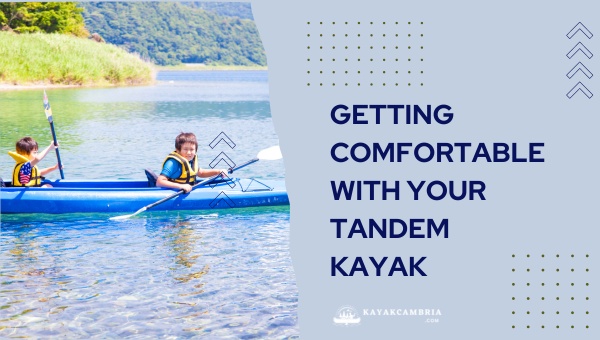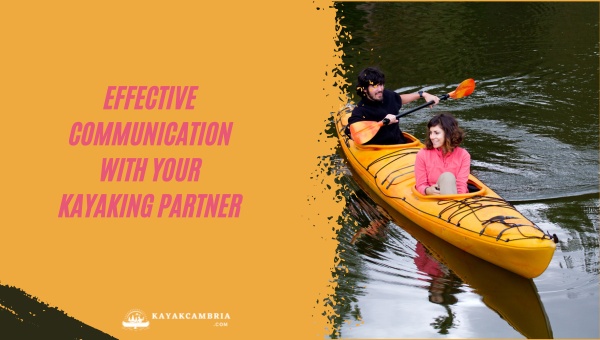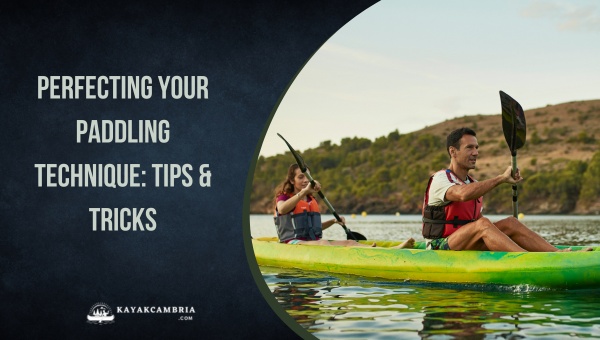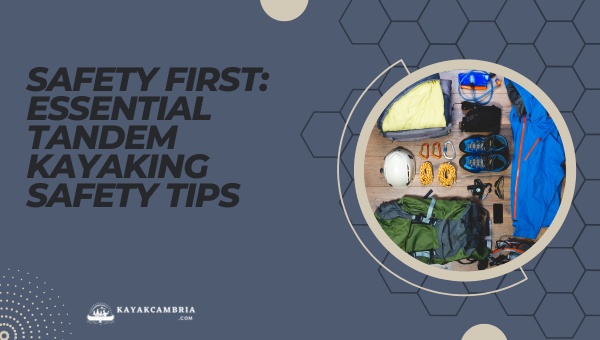Imagine gliding through picturesque landscapes, exploring hidden coves, or even getting a heart-pumping workout, all while sharing the experience with a partner. This is the thrill of tandem kayaking, an outdoor activity that offers both fun and fitness. Whether it’s a getaway with a spouse, a bonding moment with a friend, or a day out with family, tandem kayaking presents countless opportunities to create wonderful memories that last a lifetime.
As with any adventure, mastering the basics of tandem kayaking is the key to safe and enjoyable experiences. One of the essential elements to learn is how to paddle efficiently and in sync with your partner. This not only propels your kayak smoothly through the water, but also builds the foundation for a harmonious team effort during your aquatic explorations.
In this article, we’ll delve into the essentials of tandem kayaking, from choosing the right kayak to honing your paddling technique, effective communication, safety tips, and more. So grab your life jackets, and let’s embark on a journey that truly connects you with nature and fellow adventure-seekers.
Contents
Contents
Choosing The Right Tandem Kayak

When it comes to tandem kayaking, finding the perfect kayak is an essential step. A suitable tandem kayak can immensely impact your entire kayaking experience. Here are some factors to consider when choosing the right tandem kayak.
1. Size And Weight Capacity
First and foremost, consider the size and weight capacity of the kayak. In general, tandem kayaks are bulkier than their single counterparts. Ensure that the kayak can comfortably accommodate you, your partner, and any gear you may want to carry along. Check the manufacturer’s recommendations and consider your combined weight to avoid overloading the kayak.
2. Material And Durability
Tandem kayaks are typically made of three materials: polyethylene, ABS plastic, or composite material. Each material has its pros and cons:
- Polyethylene: Affordable and durable, but heavier and prone to UV damage.
- ABS plastic: Lightweight and more resistant to UV damage, but a little more expensive than polyethylene.
- Composite: Lightweight and highly durable, but usually the most expensive option.
Evaluate your budget and preferences to choose a suitable material for your tandem kayak.
3. Hull Shape And Stability
The hull shape affects the tandem kayak’s stability, maneuverability, and tracking. Primary stability is essential for beginners, focusing on a flatter hull shape that offers more stability on flat water. Secondary stability, on the other hand, is vital for choppy waters and requires a more rounded hull shape.
4. Sit-In Or Sit-On-Top
When choosing the right tandem kayak, consider whether you prefer a sit-in or sit-on-top kayak. Sit-in kayaks are usually more stable and suitable for colder environments, while sit-on-top kayaks allow easier entry and exit.
5. Storage And Transportation
Consider how easy it is to transport and store your tandem kayak. Check if your kayak has built-in storage space for your gear and supplies. Additionally, look into how easy it is to transport and store your kayak. Some tandem kayaks can be disassembled or inflated for easier storage and transportation.
By taking the time to evaluate these essential factors, you can choose the perfect tandem kayak for your paddling adventures with your partner. Remember, the right selection will significantly affect your comfort, safety, and overall kayaking experience.
Getting Comfortable With Your Tandem Kayak

One of the key aspects of enjoying your tandem kayaking experience is ensuring both you and your partner are comfortable in the kayak. Familiarizing yourself with the various parts of the kayak while adjusting for the ideal seating and legroom will set the stage for a fun and successful kayaking adventure.
Familiarizing Yourself With Kayak Parts And Functions
Before hitting the water, take some time to get acquainted with your tandem kayak. This will help you understand how each component functions and how it might affect your paddling technique. The main parts of a tandem kayak you should be familiar with include:
- Hull: The main body of the kayak that provides buoyancy and shape.
- Cockpit: The enclosed area where you and your partner sit.
- Deck: The top of the kayak that covers the hull and cockpit area.
- Bow and Stern: The front (bow) and back (stern) of the kayak.
- Rudder/Skeg: An optional steering device located at the stern.
- Footrests: Adjustable platforms for bracing your feet while paddling.
Adjusting The Seating And Legroom For Comfort And Stability
Before you embark on your tandem kayaking adventure, it’s crucial to find the proper seating position and ensure you have enough legroom. Achieving the correct sitting position will help with your overall stability and control while paddling. Follow these steps to ensure you are seated comfortably:
- Settle into the kayak seat: Gently lower yourself into the kayak, placing your feet on the footrests. Make sure to sit upright and avoid slouching.
- Adjust the seat: Most tandem kayaks come with adjustable seats. Adjust your seat to support your lower back comfortably. Ensure both you and your partner have equal space.
- Check for comfortable legroom: Your legs should have a slight bend at the knees when placed against the footrests. If your kayak has adjustable footrests, move them accordingly to achieve the right fit.
- Ensure a secure grip on the paddle: Your paddle should be positioned with your elbows bent at a 90-degree angle when you reach forward to start paddling.
By following these steps, you’ll ensure that you and your kayaking partner are comfortable and ready to glide through the water with ease.
Effective Communication With Your Kayaking Partner

When tandem kayaking, it’s essential to maintain open and effective communication with your partner. In fact, seamless communication can make the difference between a successful, fun-filled outing and a disastrous one. In this section, we’ll explore some fundamental communication strategies and techniques that will enhance your tandem kayaking experience.
Mastering The Basics: Commands And Gestures
Establishing a clear set of commands and gestures to signal your partner is crucial for ensuring smooth, synchronized paddle strokes. Here are some suggestions:
- Ready to paddle: Before you start paddling, make sure both you and your partner are ready. A simple thumbs up or a verbal cue such as “Ready?” can help accomplish this.
- Hold: If you need your partner to stop paddling, signal them by raising your fist or saying “Hold.”
- Switch sides: Paddling on alternate sides can help maintain balance and make steering easier. To indicate a switch, tap the back of your paddle on the kayak, or say “Switch.”
- Turn left/right: Signal your partner with a clear hand gesture or verbal command like “Turn left” or “Turn right,” indicating the direction you want to go.
- Paddle forward/backward: To signal your partner to paddle forward, point your paddle in the direction you want to go. If you need to paddle backward, pull the paddle towards you.
Open Communication Channels
During your tandem kayaking adventure, it’s important to check in with your partner regularly. This ensures that both parties are comfortable, aware of any challenges, and enjoying the experience. You can ask questions like “How are you doing?” or “Do you need a break?” to gauge your partner’s comfort level and make adjustments if necessary.
Addressing Challenges Together
If you encounter a tricky situation, such as strong winds, rough waters, or navigating around obstacles, teamwork is key. Openly discussing the challenges and determining the best course of action as a team will not only help strengthen your relationship with your kayaking partner but also ensure the safety of both parties.
Perfecting Your Paddling Technique: 2024 Tips & Tricks

When it comes to tandem kayaking, perfecting your paddling technique is crucial for a smooth and enjoyable experience. Take a look at some essential pointers to help you and your partner paddle like seasoned pros.
Proper Hand Placement And Grip
Having the correct hand placement and grip on your paddle makes a significant difference in your effectiveness as well as endurance while paddling. Make sure to maintain a shoulder-width distance between your hands on the shaft of the paddle, with your fingers wrapped around the shaft and your thumb underneath. This grip will provide you with ample control over your paddle while keeping your wrists and arms comfortable.
The Art Of The Forward Stroke
The forward stroke is the backbone of tandem kayaking, propelling your kayak forward as you and your partner work together. Here are the key components of a good forward stroke:
- Reach: Extend your arm fully, planting the paddle blade deep into the water.
- Rotate: Use your torso and core muscles, not just your arms, to generate power.
- Catch: Submerge the full blade of your paddle into the water, aiming for clean entry with minimal splashing.
- Power Phase: Push the paddle with your top hand while pulling with your bottom hand, utilizing your core muscles.
- Exit: Release the paddle blade smoothly from the water at your hip, without disrupting the flow.
Finding Synchronization With Your Partner’s Strokes
In tandem kayaking, it’s essential to synchronize your paddle strokes with your partner. This helps in maintaining an even and consistent pace, preventing any conflict between the paddlers. Pay attention to your partner’s rhythm and try to match it, placing your paddles in the water simultaneously to create a well-coordinated paddling effort.
Mastering Turns, Reverses, And Maneuvers
Making turns, reversing, and maneuvering your tandem kayak requires good communication and teamwork. To turn, have the paddler in the front apply a forward sweep stroke on the desired side of the kayak while the paddler in the back executes a reverse sweep on the same side. For a reverse, both paddlers should paddle backward in unison. In windy conditions or strong currents, use edging and lean turns to make your maneuvers more efficient.
Dealing With Strong Winds And Currents
While kayaking, it’s essential to be prepared for strong winds and currents that could affect your paddling. To maintain control of your kayak, stay low and keep your center of gravity close to the water’s surface. Adjust your paddling technique to maintain a straight course by using leverage and the right combination of forward and reverse strokes.
Equipped with these tips and tricks, you’ll be well on your way to mastering your paddling technique in a tandem kayak.
Safety First: Essential Tandem Kayaking Safety Tips (2024)

Safety should always be a top priority when tandem kayaking, as accidents can happen even to seasoned paddlers. Here are some essential safety tips to keep in mind when out on the water.
1. Be Prepared
Before setting out on your tandem kayaking adventure, ensure that you have all the necessary safety gear, including life jackets, helmets, a safety whistle, and a bilge pump. Don’t forget to wear proper clothing suitable for the weather and water conditions.
Pro tip: Always wear a life jacket (also known as a personal flotation device or PFD), even if you’re an experienced swimmer or paddler. Accidents can happen unexpectedly, and having your PFD ensures that you remain afloat in case of an emergency.
2. Communication Is Key
Maintaining clear and open communication with your kayaking partner is not only essential for efficient paddling but also for keeping each other safe. Establish a set of standard signals and commands for various situations you may encounter on the water, such as changing directions, stopping, or warning your partner of potential obstacles.
3. Know Your Limits
It’s important to understand your own limits, as well as those of your kayaking partner. Take the time to assess your individual skills, endurance, and comfort level in various water conditions. Don’t push yourself or your partner too hard, and never kayak in conditions that you’re not prepared for.
4. Stay Weather Aware
Keep an eye on the weather forecast before and during your tandem kayaking adventure. Be prepared to postpone or cut short your trip if the weather conditions become unfavorable. If you see signs of an approaching storm, such as dark clouds or sudden changes in wind direction, head back to shore as quickly and safely as possible.
5. Learn How To Capsize Recovery
Capsizing is not uncommon in kayaking, especially in rough waters, strong winds, or when learning new skills. Familiarize yourself and your partner with capsize recovery techniques, such as the T-rescue, and practice them together so you’re prepared to manage a real-life capsizing situation.
6. Stay Visible
To avoid collisions with other watercraft, it’s essential to make yourself visible on the water. Attach a high-visibility flag to your kayak, and consider wearing brightly colored clothing as well. In low light conditions, use a waterproof flashlight or strobe light to signal your presence to other boaters.
Tandem Kayaking Etiquette and Environmental Considerations

As we enjoy the beauty and serenity of tandem kayaking in various water bodies, it is essential to uphold a certain level of etiquette and be aware of our impact on the environment. By respecting nature and being considerate of fellow kayakers and other water enthusiasts, we can create a harmonious experience for everyone on the water. Here are some important points touching on tandem kayaking etiquette and environmental considerations.
Respecting the Natural Environment and Wildlife
While tandem kayaking, it’s crucial to remember that we are sharing the water with various species of flora and fauna. In order to respect the natural habitats of these creatures, we should:
- Avoid disturbing wildlife by maintaining a safe distance from them and avoiding any quick movements that could scare or startle them.
- Stay on designated waterways to minimize the impact on the environment. Refrain from cutting through marshes or shallow areas where vegetation thrives.
- Pack in, pack out – Carry a garbage bag and ensure that all your trash is removed from the water. Leave nothing behind that can harm the ecosystem.
Common Courtesy for Interacting with Other Water Users
Good etiquette while tandem kayaking extends not only to the environment but also to the people with whom we share the waterways. By being mindful of others, we can make everyone’s time on the water more enjoyable. Here’s how:
- Yielding to others when necessary, especially in tight or crowded areas. This includes yielding to other watercraft, such as sailboats, motorboats, and stand-up paddleboarders.
- Greeting others on the water with a smile, a wave, or a simple “hello” is always a great way to foster a friendly atmosphere.
- Offering assistance to fellow kayakers or water users who might be in need.
- Keep noise levels low and refrain from playing loud music or using offensive language. Remember that many people are drawn to the water for its tranquility.
By incorporating these etiquette guidelines and environmental considerations into our tandem kayaking journeys, we can help preserve nature’s beauty and foster positive experiences for all who venture onto the water.
Frequently Asked Questions
1. What is a tandem kayak?
A tandem kayak is a type of watercraft designed for two people, with two seats facing forward. These are typically longer and slightly wider than single kayaks, providing enough space and weight capacity for two paddlers.
2. Is tandem kayaking a good activity for beginners?
Yes, tandem kayaking can be an excellent activity for beginners. It allows an inexperienced paddler to learn from a more skilled partner while sharing the workload. This can also make it less intimidating and more enjoyable for those new to the sport.
3. Can a tandem kayak be used solo?
Some tandem kayaks can be paddled solo, with the paddler sitting in the rear seat to balance the kayak properly. However, it might be more challenging to maneuver and control due to the length and weight of the kayak.
4. Do you need any specific equipment for tandem kayaking?
In addition to a tandem kayak, you’ll need two paddles, personal flotation devices (PFDs) for both paddlers, a bilge pump or sponge to remove water from the kayak, and basic safety gear such as a whistle and a first aid kit.
5. How do I choose the right tandem kayak for my needs?
Consider factors like the kayak’s size, weight, capacity, and material, as well as the skills and preferences of both paddlers. Test paddling a variety of tandem kayaks can also help you make an informed decision.
6. How can I improve communication with my kayaking partner?
Establish clear verbal commands and non-verbal cues to guide each other throughout the kayaking experience. Practicing together and discussing your paddling goals can also strengthen your teamwork.
7. What are some common paddling mistakes to avoid in a tandem kayak?
Common mistakes include poor synchronization, not having a proper grip on the paddle, incorrect paddle stroke technique, and not adjusting your strokes for wind and current conditions.
8. How do I rescue a capsized tandem kayak?
One common technique is the “T-rescue,” which involves having a fellow kayaker assist you in flipping your capsized kayak upright, then re-mounting your kayak with the help of your rescuer.
9. How should I care for and maintain my tandem kayak?
Rinse your kayak and equipment with fresh water after each use. Store your kayak in a cool, dry place, protected from the elements. Periodically check for any damage or wear and repair as needed.
10. What are some good locations or environments for tandem kayaking?
Tandem kayaking can be enjoyed in a variety of water environments, from calm lakes and rivers to coastal areas and open oceans. Beginners should start with calm, protected waters, while more experienced paddlers can explore more challenging environments.
Conclusion
As we paddle on toward mastering tandem kayaking, it’s important to remember that practice makes perfect. Continuation in honing our paddling techniques, learning efficient communication with our partners, and adapting to various water conditions are essential components of our progress. Paddling a tandem kayak not only serves as a wonderful recreational activity but also offers a unique opportunity to bond with our kayaking partner and forge special memories of shared adventures.
The prowess we gain from learning how to paddle a tandem kayak allows us to appreciate the true beauty of nature while also promoting a sense of teamwork, trust, and empathy. In turn, these qualities encourage us to become responsible stewards of the environment, ensuring that the natural wonders enjoyed on our tandem kayaking adventures remain pristine and preserved for generations to come.
So, let’s double up our efforts, embark on new aquatic explorations, and make our next tandem kayaking experience a truly unforgettable, safe, and eco-friendly one. Happy paddling!

